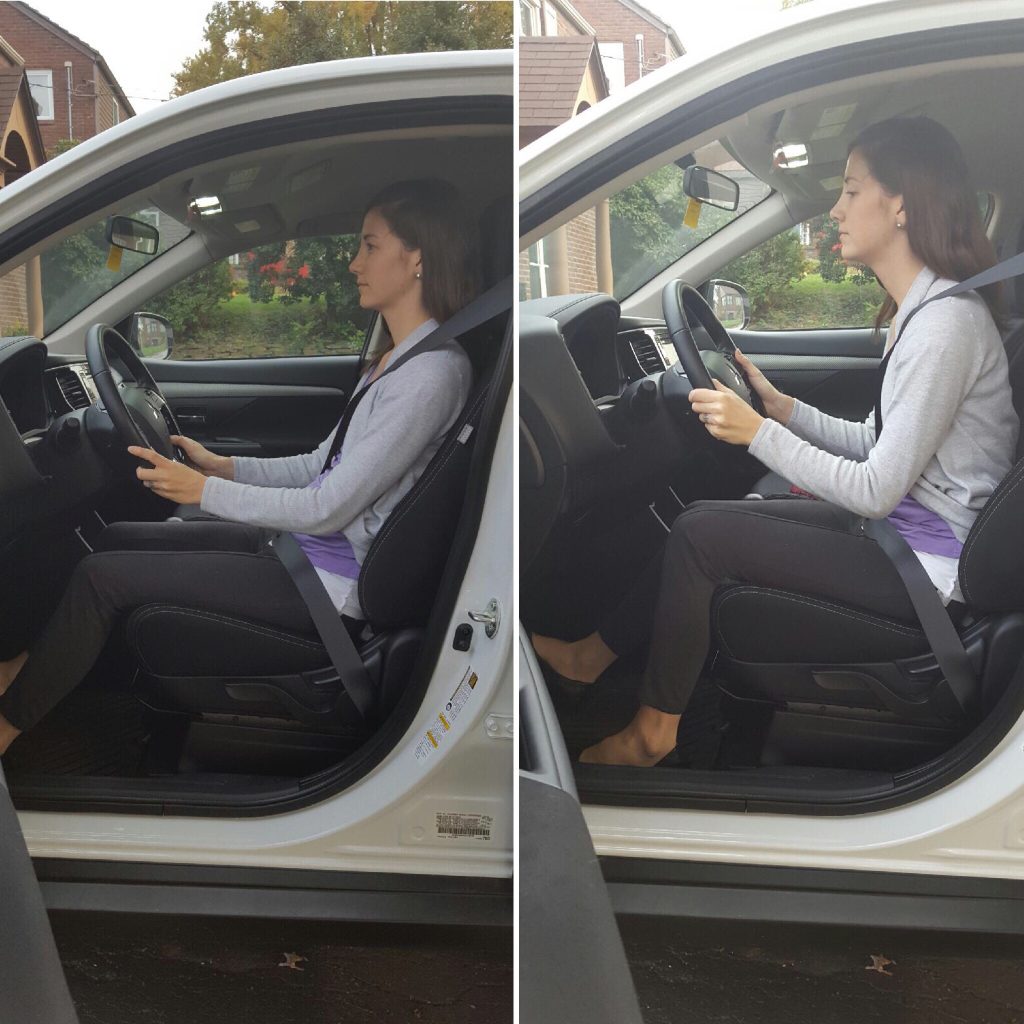Driving Ergonomics

According to data collected by AAA, drivers spend an average of 92 minutes per day driving. This adds to more than 10 hours per week. Add a construction project or some bad weather into the picture and we can be looking at much more time spent in the car. It’s no wonder posture while driving can lead to musculoskeletal imbalances and even injuries.
There are a lot of things to consider when buying a vehicle, cost, color, fuel efficiency and so on. Have you ever considered the ergonomics of the vehicle? One of the first things we do getting into a new vehicle or getting into a vehicle for the first time is adjust the seat and mirrors to our liking, but is this adjusted to the proper way to sit while driving? Below are some tips to optimize a healthy spine while driving.
1. Begin with the way you enter and exit the vehicle. When entering the vehicle you should first sit in the seat, then swing your legs in. When exiting, you should do the opposite, swing your legs out then stand. This prevents twisting and strain on the lower back.
2. Next, adjust the seat.
- Height: The height of the seat should put you at a level that you can clearly see over the steering wheel but not so close to the roof of the car that you feel you are ducking.
- Distance from pedals: You should be able to reach the pedals by only moving your legs, meaning your backside does not move forward from the seat. Between the seat height and distance from the pedals, your hips and knee should be level. Your non driving foot should be parallel with your driving foot in the space next to the pedals.
- Back of the seat: The entire back of the seat, including the head rest, should make contact with your body. Adjust the back of the seat and head rest so that the back of your head, your upper back and your lower back are in contact with the seat. If you have adjustable lumbar support, be sure it makes contact with your low back. This position would create a 90° angle between your torso and hips.

correct seating vs. incorrect seating
3. Adjust the steering wheel and mirrors.
- Steering wheel: Adjust your steering wheel toward you then up or down so that it is within comfortable reach. Your back should not leave the seat to reach the steering wheel and your elbows should remain bent and close to your body. Not only does this prevent strain to the upper back and neck, but keeps you from sitting too close the airbag.
- Mirrors: From your newly adjusted position, move your mirrors so that everything is safely within view.
Sources:
American Driving Survey: Methodology and Year 1 Results, May 2013- May 2014 [PDF]. (2015, April). Washington DC: AAA Foundation for Traffic Safety.
https://www.aaafoundation.org/sites/default/files/2015AmericanDrivingSurveyFS.pdf
Driving Ergonomics. (n.d.). Retrieved October 28, 2016, from http://www.ergonomicssimplified.com/tips/driving


